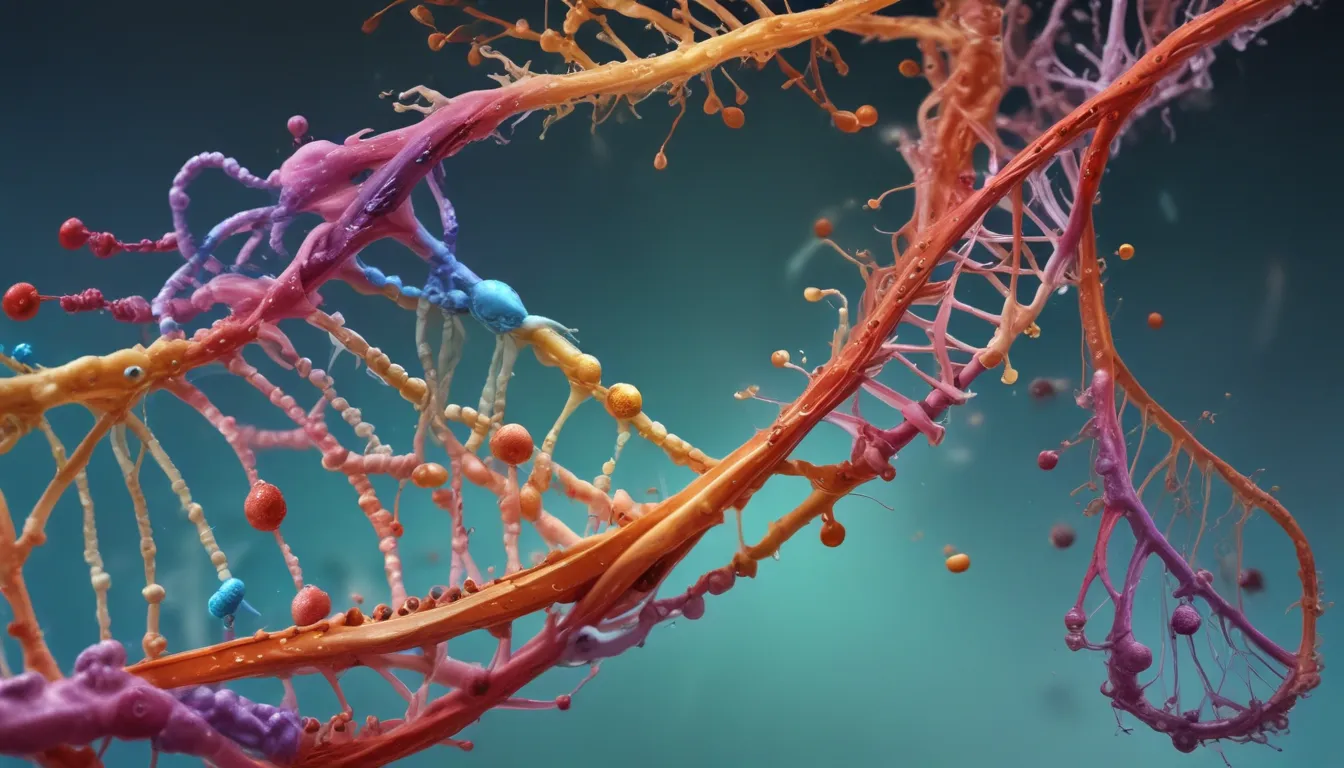A Note About Images: The images used in our articles are for illustration purposes only and may not exactly match the content. They are meant to engage readers, but the text should be relied upon for accurate information.
Welcome to the captivating realm of transcriptomics, a field that has revolutionized our understanding of gene expression and molecular biology. Transcriptomics unravels the intricate secrets of gene regulation and sheds light on the inner workings of our cells. In this article, we will embark on a fascinating exploration of 17 surprising facts about transcriptomics that will broaden your horizons and deepen your appreciation for this innovative field. From the discovery of novel genes to the study of gene networks, transcriptomics offers a treasure trove of discoveries waiting to be unveiled. So, fasten your seatbelts and prepare to be amazed by the wonders of transcriptomics!
The Wonders of Transcriptomics:
Transcriptomics serves as a powerful tool that enables scientists to scrutinize the RNA molecules produced by genes, providing invaluable insights into gene expression and its regulation. Here are some key takeaways to kickstart our journey into the captivating world of transcriptomics:
- Transcriptomics is akin to a secret code that unveils the mysteries of gene regulation, offering researchers a roadmap to explore the intricate dance of genes in our cells.
- It serves as a treasure map leading to groundbreaking discoveries about genes and their pivotal roles in diseases, development, and environmental responses, akin to piecing together a captivating puzzle of life.
Understanding Transcriptomics:
-
The Study of RNA Molecules:
Transcriptomics delves into the study of all RNA molecules present in a cell, providing scientists with a comprehensive view of gene expression and regulatory mechanisms. -
Insight into Gene Expression:
By offering a snapshot of gene expression, transcriptomics allows researchers to measure the abundance of specific mRNA molecules in a cell, elucidating which genes are active and contributing to cellular processes. -
Revealing Novel Genes:
Through transcriptomics, newfound genes that were previously undiscovered have been unearthed, expanding our comprehension of the intricate genetic landscape and opening new avenues of research.
Uncovering the Marvels of Transcriptomics:
-
The Role of Alternative Splicing:
Transcriptomics enables the study of alternative splicing, a phenomenon where different combinations of exons within a gene can be included or excluded in the final mRNA molecule, adding layers of complexity to gene expression regulation. -
Identification of Biomarkers:
By comparing transcriptomes of diverse cell types or disease states, scientists can pinpoint unique patterns of gene expression that serve as biomarkers for diagnostics or monitoring treatment efficacy. -
Discovery of Drug Targets:
Transcriptomics plays a pivotal role in identifying potential drug targets by analyzing gene expression profiles of diseased cells, aiding in the development of targeted therapies.
Delving Deeper into Transcriptomics:
-
Unraveling Gene Regulation Mechanisms:
By studying the transcriptome, researchers gain insights into the intricate mechanisms governing gene expression, elucidating the roles of transcription factors, epigenetic modifications, and other factors in gene regulation. -
Exploring Non-Coding RNA:
Transcriptomics has unveiled the significance of non-coding RNA molecules in gene regulation and cellular processes, shedding light on their pivotal roles previously deemed as “junk” or non-functional. -
Insights into Developmental Processes:
Analyzing transcriptomic data across different developmental stages offers a comprehensive understanding of gene expression changes during embryogenesis and tissue differentiation.
Transcriptomics in the Real World:
-
Applications in Cancer Research:
Transcriptomics aids in comparing the transcriptomes of cancer cells with normal cells, identifying genes dysregulated in cancer and unraveling underlying mechanisms of cancer development to develop targeted therapies. -
Studying Environmental Responses:
Transcriptomics allows investigation into how organisms respond to environmental changes by analyzing gene expression patterns, providing insights into adaptive mechanisms. -
Exploring Infectious Diseases:
By analyzing transcriptomes during infections, scientists gain insights into molecular mechanisms of infection, host-pathogen interactions, and host immune responses.
Embracing the Future of Transcriptomics:
-
Advancements in Single-Cell Analysis:
Recent innovations in transcriptomics techniques enable studying gene expression at the single-cell level, offering a deeper understanding of cellular heterogeneity and new avenues of research in various disciplines. -
Rapid Evolution of the Field:
Transcriptomics technologies continue to advance swiftly, making it an exciting and dynamic field of research, with new methods continually being developed to enhance sensitivity, accuracy, and scalability.
Beyond the Bounds of Biology:
- Transcriptomics’ Implications in Various Fields:
Transcriptomics transcends biology, extending its applications to medicine, agriculture, and environmental science, with implications for human health, food security, and conservation efforts.
In conclusion, transcriptomics stands as a captivating field that has redefined our understanding of gene expression and regulation, offering a plethora of astonishing facts that have shaped advancements across various domains of biology and medicine.
Our exploration of 17 remarkable facts about transcriptomics has unveiled the complexity and versatility of the transcriptome, providing profound insights into gene function and disease mechanisms. As technology progresses and our comprehension of transcriptomics deepens, we anticipate forthcoming astounding discoveries that will shed light on the mysteries of gene expression and illuminate the intricate mechanisms that propel life forward.
Frequently Asked Questions:
-
What is transcriptomics?
Transcriptomics involves studying the transcriptome, encompassing the entire set of RNA molecules produced by a cell, tissue, or organism, providing insights into gene expression patterns and regulatory mechanisms. -
How is transcriptomics different from genomics?
While genomics studies an organism’s complete genome, transcriptomics specifically focuses on actively transcribed genes expressed as RNA molecules, offering insights into gene expression patterns in various biological processes. -
What techniques are used in transcriptomics?
Transcriptomics employs techniques like RNA sequencing, microarray analysis, and qRT-PCR to examine RNA molecule abundance and diversity in samples, offering snapshots of gene expression patterns. -
How is transcriptomics used in personalized medicine?
Transcriptomics plays a crucial role in personalized medicine by analyzing transcriptomic data to identify disease biomarkers, predict drug responses, and develop tailored treatments based on individual genetic profiles. -
How does transcriptomics contribute to cancer research?
Transcriptomics advances understanding of cancer biology by identifying gene expression signatures linked to specific cancer types, unraveling tumor progression mechanisms, and discovering potential therapeutic targets. -
Can transcriptomics be applied to non-human organisms?
Absolutely! Transcriptomics is a versatile tool applicable to studying gene expression in various organisms like animals, plants, bacteria, and viruses, elucidating molecular processes driving diverse life forms.
We value your trust in our commitment to delivering accurate and engaging content, cultivating a diverse community of contributors who enrich our platform with a wealth of insights and information.
Transcriptomics continues to shape the landscape of scientific discovery, offering a profound understanding of gene expression and unveiling the intricate tapestry of biological processes. Join us on this riveting journey into the realm of transcriptomics, where every fact unveiled brings us closer to deciphering the enigma of life’s genetic blueprint.






